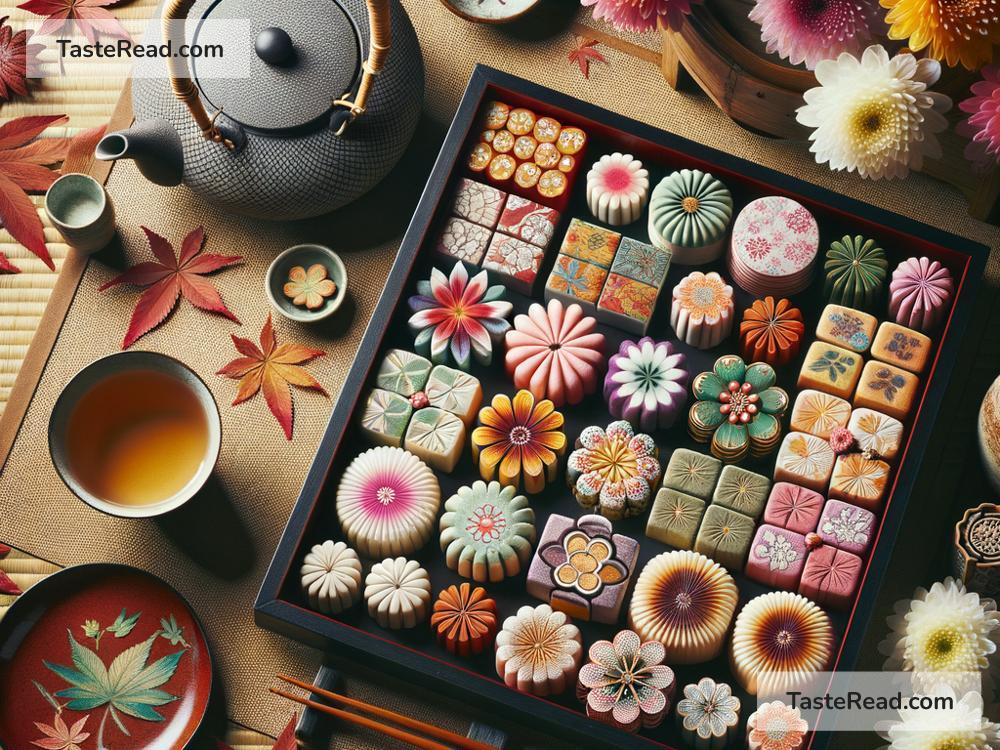The Cultural Importance of Japanese Wagashi Sweets During Seasonal Festivals
Japan is a country known for its deep respect for tradition, beauty, and harmony. These values are often expressed through food, and one of the most unique examples is wagashi, traditional Japanese sweets. Wagashi are not just treats to enjoy—they are an important part of Japanese culture, especially during seasonal festivals. These delicate sweets are a way to celebrate nature, honor history, and connect people. Let’s explore the cultural significance of wagashi during Japan’s seasonal festivals.
What is Wagashi?
Wagashi refers to traditional Japanese sweets made from natural ingredients like rice flour, red bean paste, sugar, and chestnuts. Unlike Western sweets that are often rich and heavy, wagashi is light, small, and visually stunning. Many wagashi feature elegant designs inspired by nature, such as flowers, leaves, or animals.
These sweets are not just about taste—they’re about creating an experience. Wagashi reflects the Japanese philosophy of appreciating beauty in simplicity. Each piece is like a tiny work of art, made with great care, often by skilled artisans. Wagashi is also designed to complement matcha (powdered green tea), creating a perfect balance between sweetness and the slightly bitter flavor of the tea.
Wagashi and the Seasons
One of the most fascinating aspects of wagashi is its connection to the seasons. Japan celebrates the changing seasons vividly through festivals and traditions, and wagashi plays an important role in expressing the beauty of nature during these times. Each season has its special wagashi that matches the seasonal mood and themes. Let’s take a closer look at how wagashi is used during major seasonal festivals.
Spring: Cherry Blossoms and Hope
Spring in Japan is famous for cherry blossoms, or sakura. These delicate pink flowers symbolize renewal, hope, and the fleeting beauty of life. During the Hanami (cherry blossom viewing festival), people gather under blooming trees to enjoy picnics and admire the flowers. Wagashi shaped like cherry blossoms or filled with sakura-flavored ingredients are popular during this season.
One famous spring wagashi is sakura mochi, a pink rice cake wrapped in a pickled cherry blossom leaf. The sweetness of the mochi and the subtle saltiness of the leaf create a unique flavor that reflects the balance of life. Eating sakura-inspired wagashi during Hanami is a way to deepen one’s connection to the beauty of nature and the arrival of spring.
Summer: Cooling Down with Nature
Summer in Japan can be very hot and humid, so people look for ways to stay cool. Many summer wagashi are designed to reflect refreshing themes, such as water, wind, and light. For example, mizumanju is a translucent jelly-like sweet filled with bean paste. Its clear, watery appearance reminds people of cool rivers and streams during the summer.
During festivals like Tanabata (Star Festival), which celebrates wishes and dreams, colorful wagashi often represents the twinkling stars or the vibrant paper decorations hung on bamboo trees. Eating summer wagashi during festivals is not just fun—it’s a way to feel refreshed and connected to the season’s natural beauty.
Autumn: Harvest and Gratitude
Autumn is a time of harvest and gratitude in Japan. The leaves change into warm colors like red, orange, and gold, and festivals celebrate the bounty of the earth. Wagashi for this season often reflects themes of autumn leaves, chestnuts, and pumpkins.
One well-known autumn wagashi is kuri manjū, a sweet filled with chestnut paste. Chestnuts are a symbol of autumn, and their rich, earthy flavor is perfect for the cooler, crisp weather. Autumn wagashi celebrates the changing season and the appreciation of nature’s gifts.
Festivals like Tsukimi (Moon Viewing Festival) in autumn also feature wagashi shaped like the moon or rabbits (a symbol of Japanese moon legends). People eat these sweets while admiring the glowing full moon, reflecting on the beauty of the night and the season.
Winter: Warmth and Celebration
Winter in Japan is a time of snow and cold, but also a season for cheerful celebrations like New Year’s. Wagashi in winter often has themes of warmth and good luck. For example, yokan, a firm jelly-like sweet made with red beans, can be enjoyed with hot tea to warm up on chilly days.
During New Year’s festivities, wagashi is often given as a gift or shared with family and friends. Some wagashi feature designs of good luck symbols, such as cranes and pine trees, which represent longevity and prosperity. Sharing these sweets is a way to wish happiness and health for the year ahead.
Why Wagashi Matters
Wagashi is more than food—it is art, tradition, and emotion all rolled into one. It teaches people to appreciate the beauty of nature and the flow of time. Each wagashi made for a seasonal festival reminds us that life is precious and every moment is worth celebrating.
For Japanese people, wagashi during festivals also helps pass down cultural values and connect generations. Young people learn about seasonal changes, traditional festivals, and beautiful craftsmanship through these sweets. For visitors to Japan, trying wagashi during a festival can be a meaningful way to experience the heart of Japanese culture.
Conclusion
Japanese wagashi isn’t just sweet—it’s a cultural treasure that reflects the seasons, history, and spirit of Japan’s festivals. Whether you’re enjoying sakura mochi in spring, mizumanju in summer, kuri manjū in autumn, or yokan in winter, wagashi allows you to taste the beauty of Japan’s changing seasons. So, next time you visit Japan or take part in a seasonal celebration, don’t forget to savor the magical experience of wagashi—it’s a sweet connection to nature and life itself.


